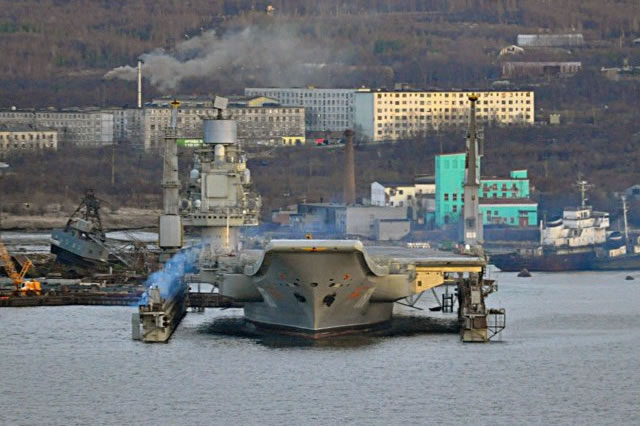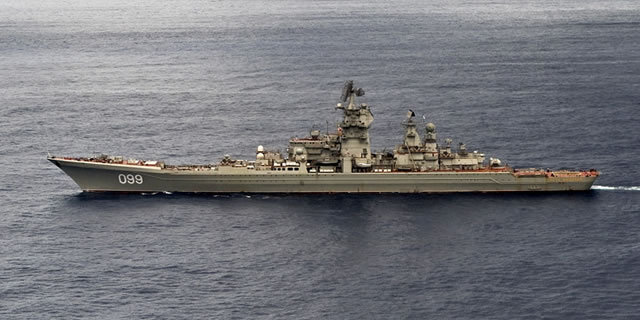| |
|||
| a | |||
Naval
Forces News - Russia |
|||
Russian
Navy Discussing Expediency of Aircraft Carrier and Cruisers Repairs
with Industry |
|||
The
expediency of repairing the Russian Navy’s largest combat ships,
including the sole aircraft carrier Admiral Kuznetsov, remains unobvious
today, President of Russia’s United Ship-Building Corporation
Alexei Rakhmanov told TASS on Friday. |
|||
 Russian Navy Aircraft Carrier "Admiral Kuznetsov" at dock 82 Shipyard in Severomorsk/Murmansk in 2015. Picture: Flotprom.ru |
|||
"We
regard the existing approach to the repair of heavy-tonnage ships, such
as the Admiral Kuznetsov and Pyotr Veliky vessels, as neither definite
nor optimal as the expenditures on repairing the ships in service for
30-35 years are close to the cost of building a new ship,"
the Corporation president said. "Unlike new ships, upgraded vessels will have a much shorter service life," he added. This issue is now "being openly discussed with the Defense Ministry," Rakhmanov said. |
 Pyotr Veliky (Peter the Great) heavy nuclear-powered missile cruiser (TARKR), the fourth Kirov class cruiser of the Russian Navy. |
|||
"Do
we need to do this? If so, in which conditions do we need to do this?
This question concerns ships’ service life. If a ship has a service
life of 30 years, do we need to extend it?" Rakhmanov said.
"The issue of the need to repair ships, especially large-size and technically complex vessels, remains unobvious for us. That is why, it is necessary to ask why we should do this rather than where we should do this," he added. "There are exceptions but even ships in the single copy, for example, the aircraft carrier Admiral Kuznetsov, have their own service life. This relates to metal and mechanism fatigue," he added. According to the Corporation president, modern approaches to ship-building should stipulate economically efficient repairs and operation of each vessel. © Copyright 2015 TASS. All rights reserved. This material may not be published, broadcast, rewritten or redistributed. |
|||










